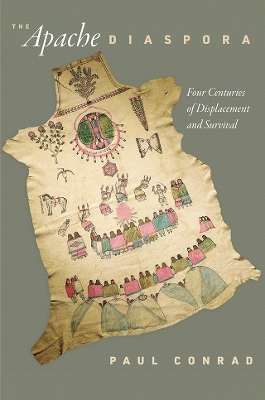Reviewed by annieb123 on
The Apache Diaspora is a well written annotated history of the Apache people presented by Dr. Paul Conrad. Due out 28th May 2021 from The University of Pennsylvania Press, it's 400 pages in print and will be available in hardcover and ebook formats.
This is one book in UPenn's: "America in the 19th Century" this volume delineates the roughly four centuries of survival, genocide, upheaval, exploitation, and fortitude of the Ndé (Apache) people of the North American southwest.
This book, while academically rigorous and prodigiously annotated throughout is refreshingly accessible to non-academics. The language is understandable and readable and the author allows the subjects to speak eloquently for themselves, through their photos and the ephemera (diaries, family oral history, and archival evidence) they left behind.
I found myself often moved emotionally during reading this book and affected deeply by the plight of the people and their families depicted here. Seeing the resilience and mettle of these people against the backdrop of the nauseating prejudice and cruel mishandling by everyone was often difficult to read and process.
The text is liberally annotated and illustrated with line drawings, facsimiles of period documents, and an impressive number of photos. Although the treatment is admittedly academic, there's enough annotation and chapter notation and bibliography to satisfy the staunchest pedant - at the same time, there's a clear and compelling biographical narrative. I'm amazed that there's enough period record to reconstruct the stories of these families after so many years.
Five stars. I would recommend this book to readers of American history, war history, American culture, classroom instruction in native history, or allied subjects, ephemera, etc.
Disclosure: I received an ARC at no cost from the author/publisher for review purposes.
Reading updates
- Started reading
- 27 March, 2021: Finished reading
- 27 March, 2021: Reviewed
